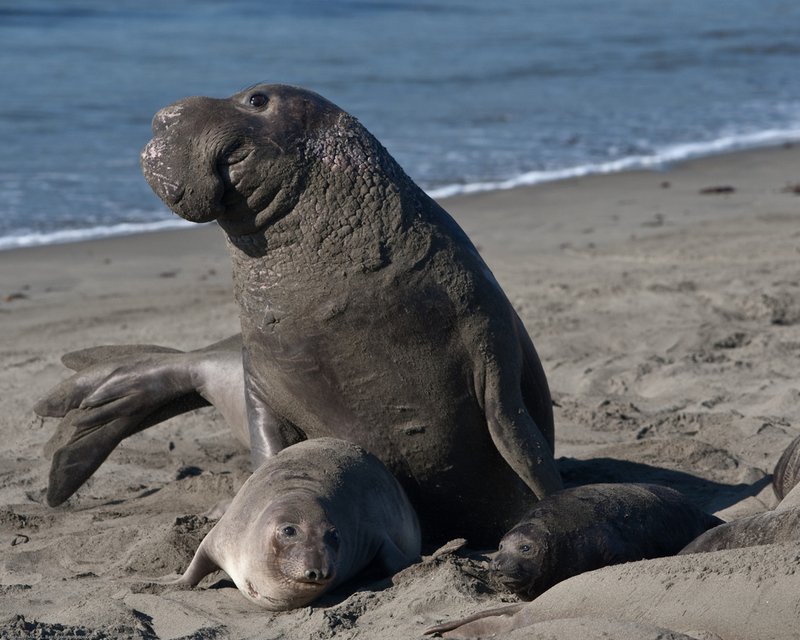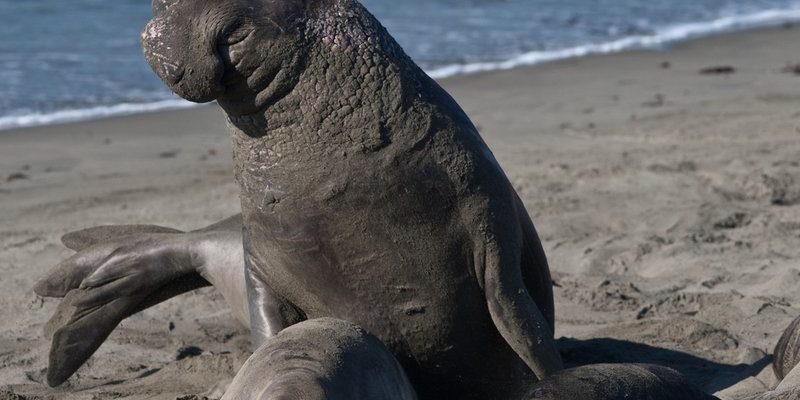
These marine mammals, named for their large, trunk-like noses, spend most of their lives in the ocean, traveling thousands of miles for food and migration. But how do they actually navigate those vast stretches of water and communicate with one another? Let me break it down for you, step by step.
The Journey Begins: Navigation Techniques
When we talk about how elephant seals navigate, we can think of them as the GPS of the animal world. They use a mix of natural instincts and environmental cues to find their way. These seals are known for their remarkable ability to travel thousands of miles to find their breeding grounds or food sources.
One of the keys to their navigation is the Earth’s magnetic field. It’s like a built-in compass that helps them stay on track. Imagine walking through a dark forest and knowing exactly where to go just by feeling the pull of the ground beneath you—that’s how these seals operate when they’re underwater.
Additionally, ocean currents and temperatures play a significant role in their navigation. Elephant seals can sense these changes, using them to find rich feeding grounds. So, just like your favorite coffee shop doesn’t change location, the seals know where the best food is because they’re wired to pick up on those subtle environmental clues.
Visual and Acoustic Cues
Let’s not forget about the importance of visual and acoustic cues. Elephant seals have keen eyesight that helps them navigate through murky waters. They can spot other seals or landmarks, which pique their curiosity and lead them to ideal locations.
Sound is another crucial aspect of their navigation. These seals can hear low-frequency sounds over long distances. Think of it like listening to your friend call for you in a crowded café. They can pick up on these sounds to locate each other, especially during breeding seasons. They can also identify their surroundings and possible threats, such as predators lurking nearby.
Communication: The Elephant Seal’s Voice
You might be wondering how elephant seals talk to each other, given that they spend much of their time in the water. They have a variety of vocalizations that serve different purposes, and it’s fascinating to see how they use these calls to communicate.
For example, males have deeper, more resonant calls that can be heard from miles away. This not only helps them assert dominance among fellow males but also attracts females during the breeding season. Imagine standing in a crowd and trying to shout above everyone’s voices—these males have perfected their calls to stand out.
Females, on the other hand, produce higher-pitched sounds usually used for nurturing their pups. It’s a bit like how a mother’s voice can soothe a child. These calls let the mothers keep track of their young amid the chaos of the colony.
Body Language and Group Behavior
Communication isn’t just about sounds. Body language plays a significant role in their interactions. For instance, when a male displays his large size and inflated nose, it signals strength and readiness to mate. Similarly, postures can indicate aggression or submission, helping seals maintain social order within their groups.
When they gather in large colonies on breeding beaches, their interactions become a mix of vocalizations and body movements, creating a dynamic social structure. It’s fascinating to think about how much information they share without saying a word—much like how we sometimes communicate with a simple nod or facial expression.
Challenges in Navigation and Communication
While elephant seals are experts in navigating and communicating, they face challenges just like any other animal. One of the biggest issues is the changing environment, including ocean pollution and climate changes that affect their migratory and feeding patterns.
For instance, as water temperatures rise, their prey may move to deeper or cooler waters. This can throw off their navigation and make it harder for them to find food. Similarly, man-made noise pollution can interfere with their communication, disrupting their vocalizations and making it difficult for them to call to one another.
This raises concerns about their survival. If they can’t adapt to these challenges, there could be risks to not just their population but also the wider ecological balance.
Adapting to Change
So, how do they adapt to these challenges? Elephant seals are incredibly resilient. Many migrate further or change their hunting strategies to make up for these shifts. For example, if their usual routes to feeding grounds become less productive, they might venture into uncharted territories, relying on their navigation skills to explore new areas.
Communication is also evolving. While changes in sound pollution can disrupt their calls, studies show that seals are learning to adjust their vocalizations to be heard more clearly. It’s like how we might raise our voices over loud music—these seals show impressive adaptability to ensure their survival.
In summary, elephant seals are more than just big animals lounging on the beach; they are masters of navigation and communication. From using the Earth’s magnetic field to help them find their way, to producing distinctive calls that convey complex messages, these creatures demonstrate a fascinating blend of instinct and learned behavior.
Understanding how they navigate and communicate not only enriches our appreciation for these animals but also highlights the need for conservation. As human activities threaten their natural habitats, we must remember that every small change can make a significant impact. Let’s celebrate these incredible creatures and work together to protect their world for generations to come!

